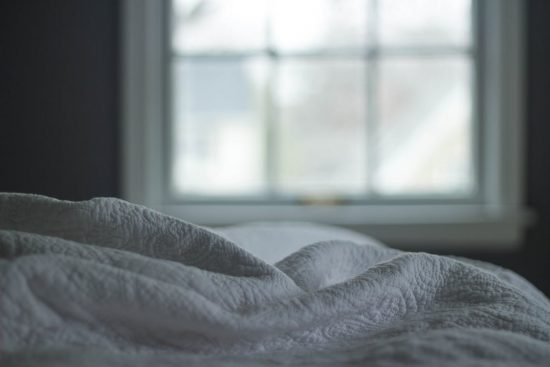16 Quotes to Help You See the Beauty of Solitude and Stillness

This is an article by James M. Gregory.
50 – 70 million.
That would be the answer if the question were, “How many people in the US have a sleep disorder?”
That number might seem innocent on its own. So people don’t sleep well, no big deal, right? You might shrug it off if you don’t dig deeper and look at the ominous statistics about fatalities and injuries related to sleep deprivation (as reported by sleepassociation.org):
There are gaping flaws in the statistical model we’re using today. Any sleep therapist with a modern approach could probably write an essay on all the things the stats can’t tell you.
The topic is beyond the scope of this article, but let us takes a moment to point out 3 obvious problems:
You see a pattern here – most of the stats we have are subjective. To be honest, the issue of subjectivity is tricky and there isn’t much we can do about it. Furthermore, statistical models have a way of improving on their own as science moves forward and we tweak the models.
In my humble opinion, we have a more serious problem on our hands than statistics. It cuts to the very core of what we define as “sleeping well.” In those terms, we’re stuck in the Industrial Revolution. To put it simply – we still rely on a crude, outdated 8-hour-based model, when we should have moved on decades ago.
It’s not that the science isn’t there – the first book describing the physiology of sleep was published back in 1913. Written by a pioneer in sleep research, Henri Pieron, it’s titled “Le probleme physiologique du sommeil”. Roughly translated, the title means “The physiological problem of sleep” and it’s the foundation of the modern, cycle-based approach to sleep deprivation.
I might’ve strayed for a moment in the analysis above but, trust me, it was necessary.
Chronic insomniacs are not the only people whose heath is compromised by the lack of proper sleep.
Think about it like this – if you laid in your bed for an hour trying to fall asleep and then got your 8 hours, you probably won’t give it a second thought. We shrug it off as non-issue and, ergo, no solution to pursue.
Here’s why that’s wrong – an occasional hiccup of restlessness might not be a big deal. It becomes an issue when it interferes with your sleep cycles, especially deep sleep.
There are no controlled studies (that I know of) examining the connection between restlessness, night-time anxiety and the balance of sleep phases. Having said that, this is what I’ve seen in my practice – people with chronic anxiety issues are about 70% as likely to suffer from imbalanced sleep.

By this point, it might sound like it’s all too complicated. You have the kids, the work, the deadlines… If you can relate to this, bear with me just a bit longer, it gets simpler.
Everything we said above can be addressed in two steps:
Enter the weighted blanket.
It’s the 21st century and we do have the technology to address these problems – one of my favorites here is the weighted blanket.
If this is the first time you’re hearing about it, it’s not new or a fleeting fad. You might also know it as a sensory or gravity blanket (the latter is just a brand that repackaged the concept and presented it in a different way). A weighted blanket is one of those products initially envisioned to address a narrow niche – ADHD, autism and similar sensory conditions – but quickly outgrew the concept.
Here’s what I mean by that. It was patented back in 2009 and the wording in the patent is precise – “spectrum of autism and hyperactivity disorders”. It wasn’t long before people realized what a weighted blanket can do in a much wider arena – sleep.
The chemistry in the mind of a restless sleeper is similar to that of a person in danger. The response of our body to danger is known as “fight or flight”. Your brain secretes cortisol (also known as “stress hormone”) and adrenaline. This prepares you to either fight or flee.
With the stressful lives we live, our brain can easily short-circuit and secrete cortisol when we don’t need it. If you find yourself lying in bed with your mind racing, skipping from overdue bills that to that time your high school crush went to the prom with the captain of the football team, there is a high chance that cortisol is the culprit.
Brains of people suffering from depression, anxiety and phobias are more susceptible to cortisol imbalance that might interfere with sleep patterns.
A weighted blanket works because it promotes secretion of calming hormones that can cancel out the effects of cortisol – serotonin and dopamine. Simply put, the added weight acts as a cocoon of sorts, sending signals to your brain that you’re not in danger.
I’d like to take a moment here to offer a second explanation about the calming effect of a weighted blanket. If you ever slept in a particularly cold room covered by 3, 4 or 5 layers, take a second here to evoke the feeling. It wasn’t just about the cold, was it?There’s something soothing about the extra weight. It’s not easy to capture the feeling with words but it comes down to feeling safe.
It’s a primal instinct. It’s not a coincidence that a depressed or troubled person will curl up into a fetal position. Our brain remembers the safety of a womb. A weighted blanket evokes those buried memories.
First things first – how heavy should it be?
The rule of thumb is 10% of your weight plus a pound or two.
Not all sensory blankets are created equal.
Choosing a good sensory / weighted blanket goes beyond the weight. There are a few other factors to be accounted for. Let us look at the two paramount points.
Choosing a weight that works for you
Sensory blankets are intricate to make and they don’t come cheap, so it’s important to take your time when choosing.
To determine what weight works for you, experiment with the regular blankets you have by adding or removing layers. Once you find the weight that feels “just right,” measure it. This should give you a good idea about your sweet spot.
Craftsmanship
For the blanket to do what it’s meant to, it’s crucial that the weight is properly distributed and there’s no shifting between the chambers. If the craftsmanship is sub-par, the inner stitches can break. When that happens, the weight will move towards the corners, which defeats the very purpose. The better ones will be double-stitched to prevent shifting.
What to expect
For kids, it’s smart to keep a sleep diary and share it with a professional. That should give you an idea of how well it works.
For adults, it should be simpler, for two reasons:
As per TheSleepStudies.com, 9 out of 10 adults using a weighted blanket saw an improvement, both in sleep quality and lowered levels of anxiety. You can see their research results & blanket recommendations for adults here.
Taking control
It’s mind-boggling to see how many people talk about their sleep improving after going vegan or gluten-free. If you’re a health-conscience person, you’ve probably seen it more than a few times. To talk about sleep only as a secondary benefit of other lifestyle changes is a causation-vs-correlation mistake at best and downright wrong at worst.
The sooner you wake up to the importance of sleep (pun intended) and the fact that you’re in control, the sooner you’ll reap the benefits.
Autor bio: James M. Gregory is a writer-turned-blogger on all things sleep. Born, raised and aged in Fairbanks, Alaska, James is a father of two and grandfather of three. He’s been quoted on sleep-related matters in reputable publications like Forbes & Entrepreneur.com.
If you enjoyed reading this article, you might also like: